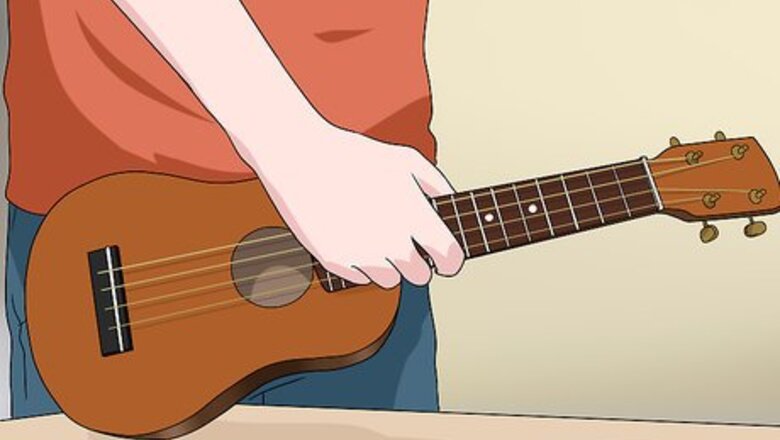
views
Using a Traditional Position
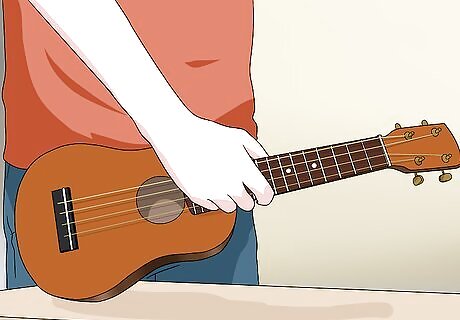
Pick up the ukulele with your right hand. The best place to grab it is where the neck meets the body. Wrap your right hand around the front of the ukulele to grasp it. For beginners, the right hand will be the hand that you strum the strings with, regardless of which hand is your dominant hand.
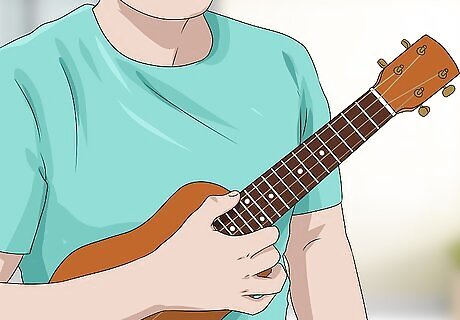
Press the ukulele to your chest. If this is uncomfortable, try moving it slightly higher or lower. The ukulele should be parallel to the ground, although the neck may be held up at a slight angle.
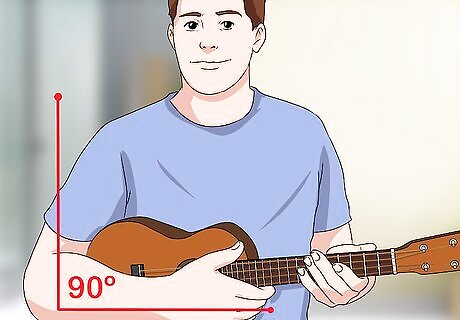
Cradle the body of the ukulele with your right arm. Keep your elbow at a 90-degree angle. The end of the ukulele should press against your forearm. If the ukulele slips, hold it a little tighter. Don't squeeze the ukulele too tightly, however. You need just enough pressure to keep the ukulele in place. Keep holding the ukulele between the neck and body until your left hand is in place.
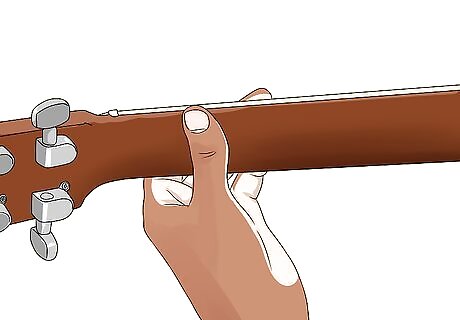
Place the thumb of your left hand behind the neck. Put it between the nut (or the top of the frets) and the third fret. Wrap the rest of your fingers around the front of the neck so that your fingers are parallel to the fret. Let your fingers float above the frets. Only your fingertips should touch the neck. The left arm should not hold the weight of the ukulele. Do not grasp the neck. A light touch will let you move your fingers more freely up and down the frets.
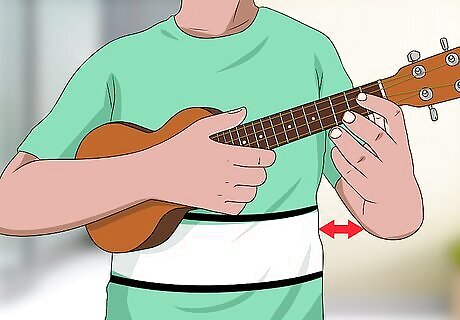
Hold your left elbow away from your body. Do not keep it tucked in or pressed against your side. Instead, keep it out a few inches from your body. There should be a straight line from your elbow through your wrist. Keep your wrist straight as you hold the ukulele. For some difficult chords, you may need to twist your wrist, but in most cases, the wrist will stay straight.
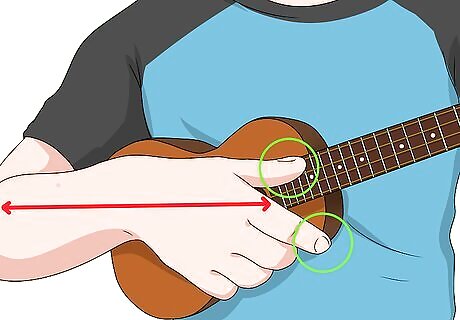
Extend your right hand along the bottom of the ukulele. Keep your wrist straight, but let your fingers cup the bottom of the instrument. You can use your thumb or index finger to strum. Some people strum over the sound hole while others will strum between the neck and the body. Whichever method you choose, make sure your hand can comfortably reach it.
Using Variations
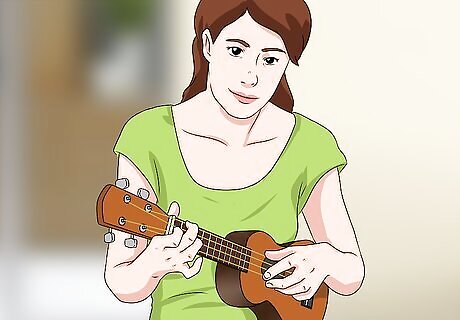
Play with your left hand if it is more comfortable. While most people play the ukulele with their right hand, you can play the ukulele with your left hand. In this case, you will hold and strum the ukulele with your left hand and play the frets with your right hand. Keep in mind that most ukulele instruction books are written for right-handed players, so you may need to reverse any instructions you use. If you do not want to constantly reverse playing instructions, you can restring your instrument so that the G-string is the top string when you hold the instrument with your left arm.
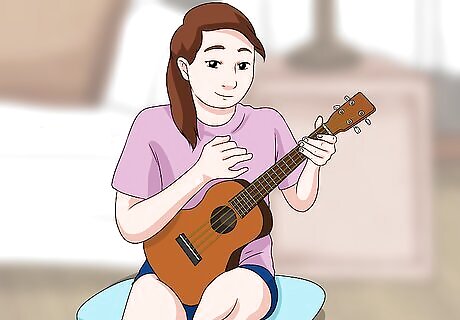
Rest the ukulele on your leg if you are sitting. To play in this position, turn the ukulele so that the neck is held up at an angle. This may help if you are playing a larger ukulele or if you are a beginner.
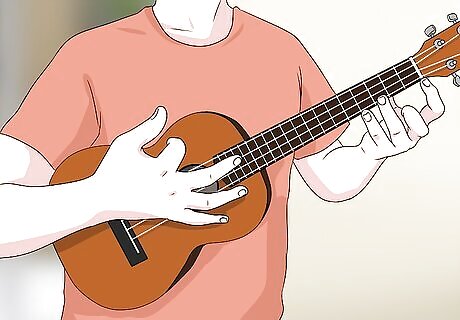
Remove your strumming hand from the ukulele if you are advanced. After a while, you may no longer need to support the ukulele by holding it on the bottom. Instead, support the ukulele entirely with your forearm. Float your wrist over the sound hole to strum. This will give you more movement. If you cannot hold the ukulele this way without it slipping, you may not be ready to try this.
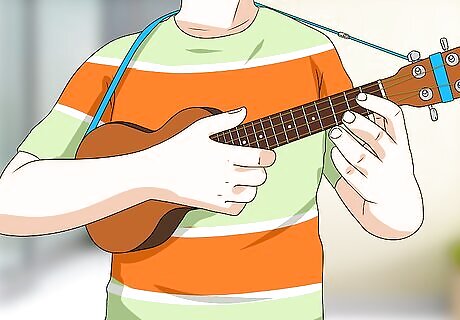
Use a strap to help support the ukulele while standing. The strap will keep the ukulele in place to let you play with more ease. You can use a ukulele strap or an adjustable guitar strap. These are available at instrument stores and online. Ukulele straps are usually not needed if you are playing in a seated position.
Checking Your Position

Move 1 hand away to see if the ukulele stays in place. Try it first with your fretting hand and then with your strumming hand. You should sit in a chair to do this. If the ukulele slips, you need to hold it tighter. If it stays put, you're holding it correctly. Always have at least one hand on the ukulele. Only let go of one hand at a time.
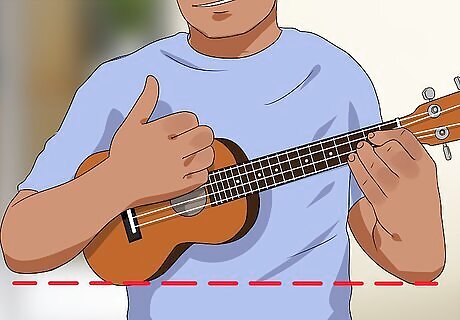
Keep your elbow at a right angle. If the ukulele starts to slip, check your elbow position to see if it is causing the problem. Your strumming elbow should always be held at a 90-degree angle. Avoid pressing either elbow too close to your body.
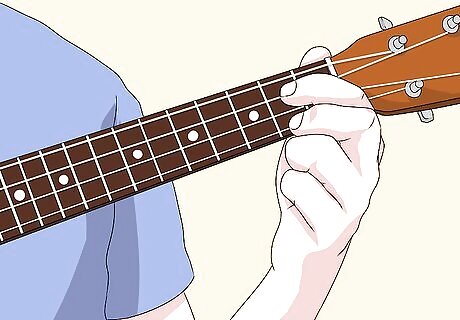
Practice fingering the chords. You should be able to comfortably reach all chords while holding the ukulele. Try playing a few simple chords. If your hands feel tired after a few minutes or if the tone is muted, you may be gripping the neck too tightly. You should never have to stretch or strain to reach a chord or to strum. If you do, adjust where you place your hands on the neck or body of the ukulele.

Relax if you start to cramp. If your hands, arms, or wrists start aching after a few minutes, you may be too tense. Check that your wrists are straight. Put down the ukulele to help you release any tension in your shoulders, arms, or neck. Try again once you are loose and relaxed. If you feel any pain or discomfort, your body is trying to tell you something! You can develop wrist strain if you are not holding the ukulele properly, so always adjust your position if you feel tense, achy, or uncomfortable.




















Comments
0 comment